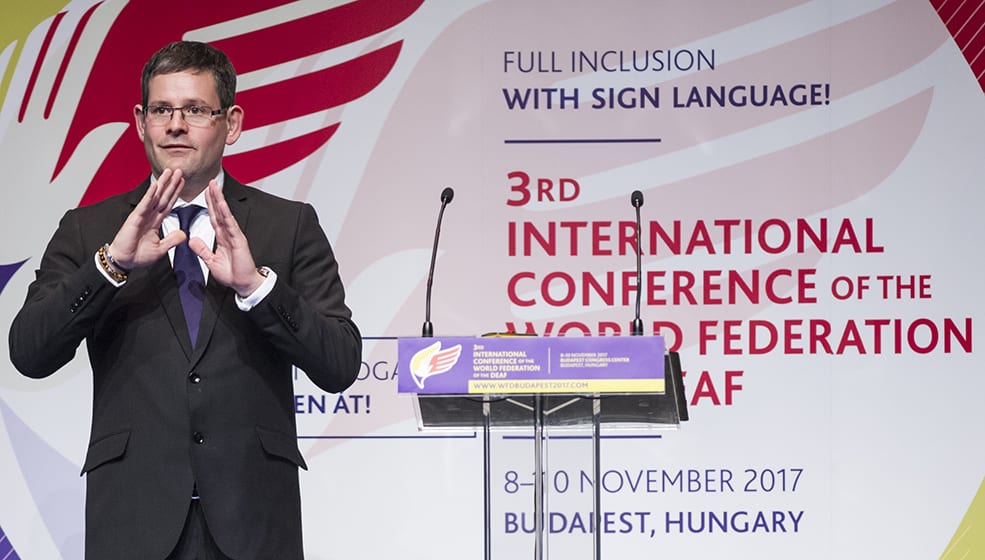
Hungary invites the world to build ‘bridge between the deaf and the hearing’
2017. 11. 15.
Addressing the third International Conference of the World Federation of the Deaf in Budapest last week, Prime Minister Orbán drew a parallel between the right of the deaf to use sign language and the Hungarian language rights of ethnic minorities in the Carpathian Basin, declaring November 9th the day of Hungarian sign language.
Everyone has the right to use their own languages without limits, the prime minister said, emphasizing that Hungary’s Fundamental Law identifies Hungarian sign language as part of Hungarian culture. In response to a joint initiative put forward by the first deaf member of the Hungarian Parliament, Gergely Tapolcai, and Prime Ministerial Commissioner for Strategic Social Relations Zsolt Nyitrai, November 9thwas declared the day of Hungarian sign language to raise awareness of the issue.
Hungary is proud to have elected the first deaf member of the European Parliament, Ádám Kósa, who has championed the fight for equal rights at the European level. Kósa welcomed the new national day initiative and, as president of the Hungarian National Association of the Deaf and Hard of Hearing (SINOSZ), co-hosted the international conference entitled “Full inclusion with Sign Language.”
After greeting the participants in sign language, Prime Minister Orbán emphasized that Hungary was the first in the world to ratify the UN Convention on the Rights of Persons with Disabilities and its Optional Protocol in 2007 at the same time – which declares that the deaf have the right to use sign language in all areas of life He further highlighted the fact that since 2013 there is a Hungarian expert in the UN CRPD Committee, Mr. László Lovászy, whose work is to represent the rights of people with disabilities.
The Prime Minister underlined that Hungary has the world’s most far-reaching sign language law in force since 2009. The Hungarian law requires national TV channels in Hungary to provide free of charge accessibility to sign language interpretation for all of their programs. The opportunity to learn in sign language and have access to interpreting services is also covered by the law, the prime minister said. What’s more, he said, in partnership with the Hungarian Academy of Sciences, the state has been developing a bilingual education curriculum for deaf people.
That’s a point that MEP Ádám Kósa has also emphasized, referring to the importance of implementing bilingual education – in Hungarian sign language and spoken Hungarian – instead of the auditory-oral approach in an exclusive way. In an interview given to Hungarian daily Magyar Hírlap, Kósa elaborated on the advantages of bilingual education because it consider sign language as it really is: the natural tongue of deaf people. WFD President Colin Allen also reinforced this point at the conference, explaining that they chose sign language as the topic of the event because they see it as a path toward equal rights and full inclusion for the deaf.
A growing number of deaf and hard of hearing in Hungary are able to find work, and accessibility for them in public places is improving, MEP Kósa said, adding that much progress has been made through hard work and raising awareness.